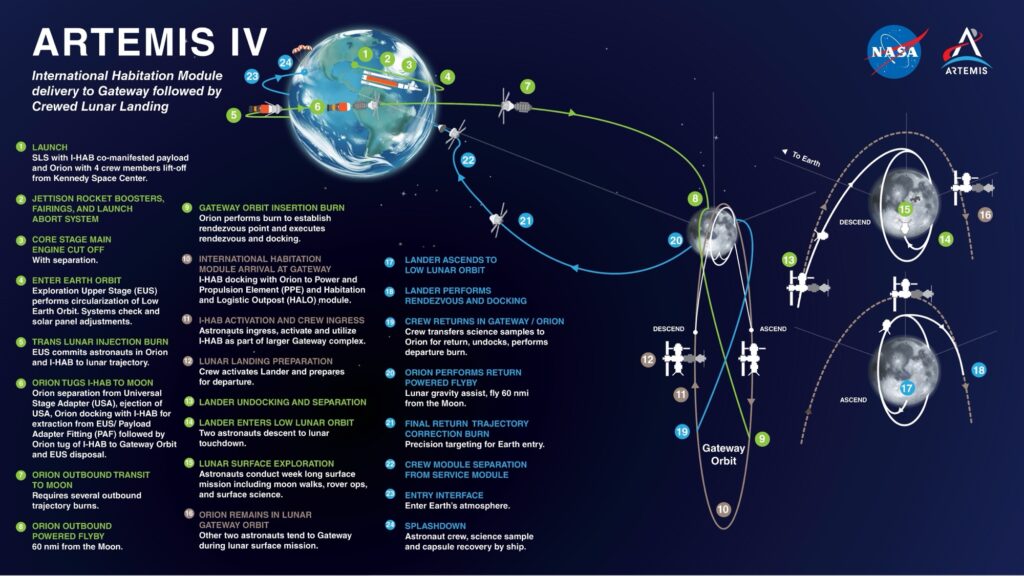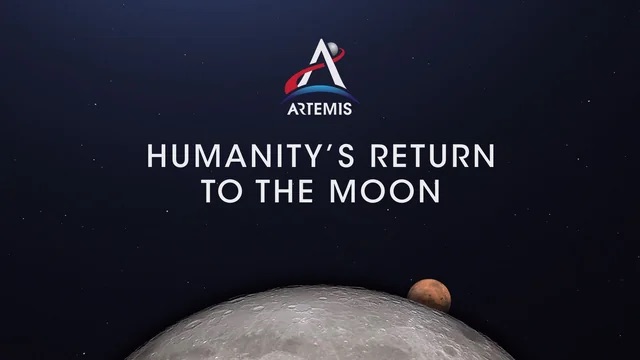
The NASA Artemis Program is an ambitious program to return humans to the Moon and establish a sustainable presence by the end of the decade. Named after the Greek goddess Artemis, sister to Apollo, this program seeks to land the first woman and the next man on the Moon. The mission is focusing on the lunar South Pole—an area believed to contain frozen water. The program also serves as a critical stepping stone for future crewed missions to Mars. Utilizing innovative technologies and international partnerships, Artemis will expand our understanding of lunar science. It will also demonstrate new technologies, and lay the foundation for private companies to build a lunar economy.
The 4 Phases of the Artemis Program.
- Artemis I: An uncrewed mission that tested the Space Launch System (SLS) and Orion spacecraft in a lunar flyby trajectory, verifying systems in space beyond low Earth orbit.
- Artemis II: The first crewed mission of the program, planned to carry astronauts on a lunar flyby. And for further testing Orion’s life support and communication systems in a deep space environment.
- Artemis III: Aimed to land astronauts near the lunar South Pole, marking humanity’s return to the lunar surface. This mission focuses on demonstrating new surface technologies and exploring for water and other resources.
- Artemis IV: Scheduled to launch components for the Lunar Gateway, a space station in lunar orbit that will serve as a staging point for lunar landings and deep space missions. This mission emphasizes establishing a sustainable human presence on and around the Moon.
Artemis I
Artemis I, an uncrewed mission launched by NASA, marked a significant milestone in the Artemis program. It lifted off on November 16, 2022, utilizing the powerful Space Launch System (SLS) rocket. This mission was designed to test the Orion spacecraft and its systems on a long-duration flight beyond Earth’s orbit. Artemis I orbited the Moon, venturing thousands of miles beyond it before returning to Earth. The mission lasted approximately 25.5 days, culminating in a successful splashdown in the Pacific Ocean on December 11, 2022. This pivotal test flight set the stage for subsequent crewed missions, aiming to ensure safety and functionality for future lunar explorers.
Artemis II
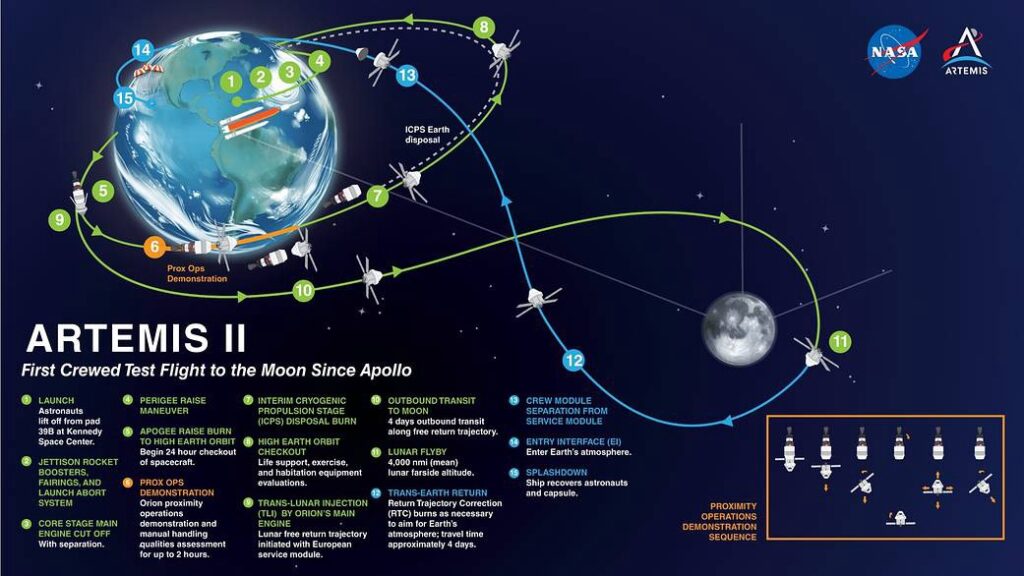
Artemis II is the planned second mission of NASA’s Artemis program and is set to be the first crewed mission of the series. Targeted for launch in November 2024, this mission will carry a crew of astronauts aboard the Orion spacecraft, propelled by the Space Launch System (SLS) rocket. The mission’s primary objective is to orbit the Moon, test the spacecraft’s life support, communication, and safety systems with astronauts. The flight is expected to last approximately 10 days and will involve a lunar flyby. The flyby allows astronauts to travel thousands of miles beyond the Moon before returning to Earth. Artemis II aims to demonstrate the capabilities required for future deep space missions and pave the way for human landings on the moon.
Artemis III
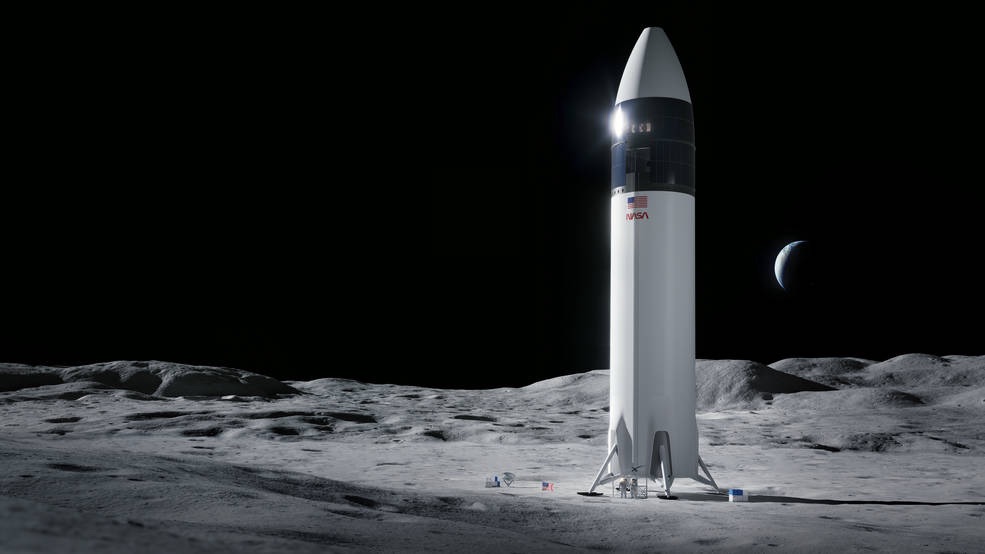
Artemis III is an eagerly anticipated mission within NASA’s Artemis program. The mission is aiming for a landmark human landing on the Moon’s surface. This mission will see astronauts, including the first woman and the next man, stepping onto the lunar South Pole. Artemis III will utilize the Space Launch System (SLS) for launch, and the astronauts will transfer from the Orion spacecraft to the Human Landing System (HLS) for their descent to the lunar surface.
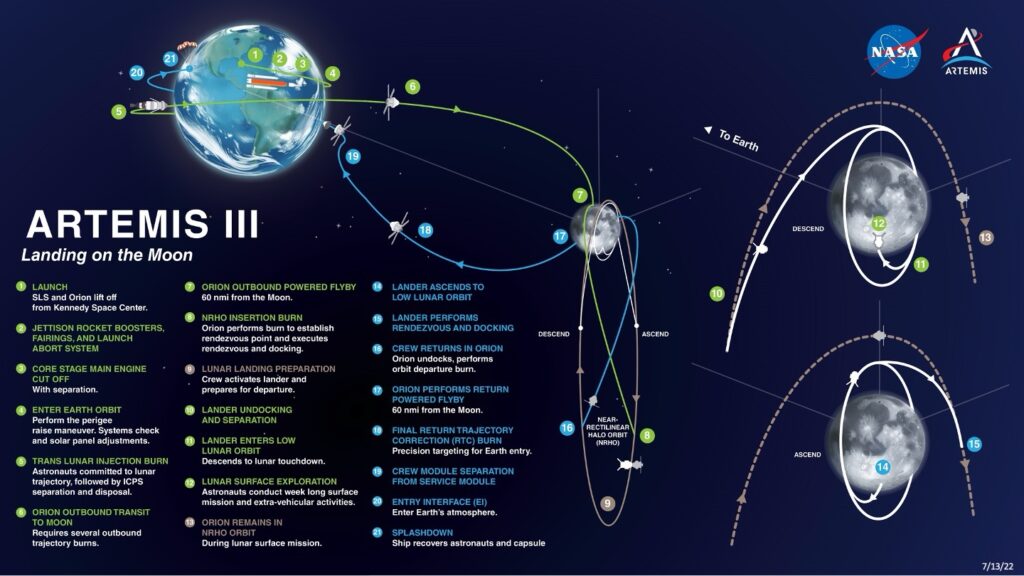
The mission focuses on exploring the polar region to conduct scientific experiments, test new technologies, and search for water and other resources. This exploration will deepen our understanding of the Moon and bolster technologies essential for the future exploration of Mars. The mission is set to last about 30 days, with several days spent on the lunar surface. This will mark a significant step towards sustainable lunar exploration and long-term scientific study.
Artemis IV
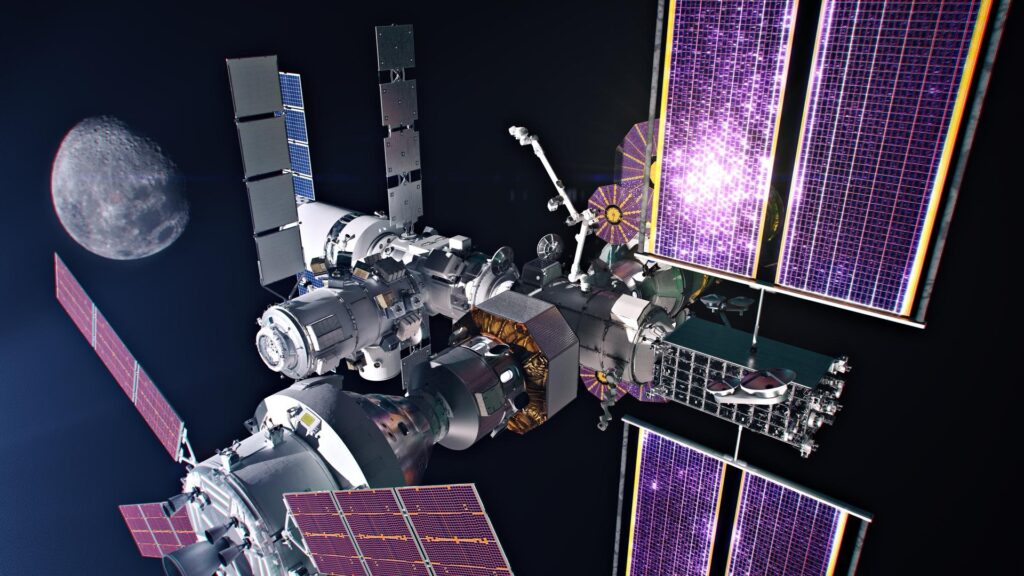
Artist’s concept of the full Gateway configuration
Artemis IV is set to expand human presence on and around the Moon. This mission will involve the assembly of the Lunar Gateway, a space station that will orbit the Moon to provide support for both lunar and deep space missions. The Gateway will serve as a staging point for lunar landings, scientific research, and future missions to Mars. Artemis IV will deliver key components, such as the I-HAB (International Habitat), to the Gateway using the Space Launch System (SLS). This mission will play a crucial role in establishing a sustainable, long-term human presence at the Moon. It will also facilitate a broader range of exploration activities and lay the groundwork for the commercial development of lunar resources.
